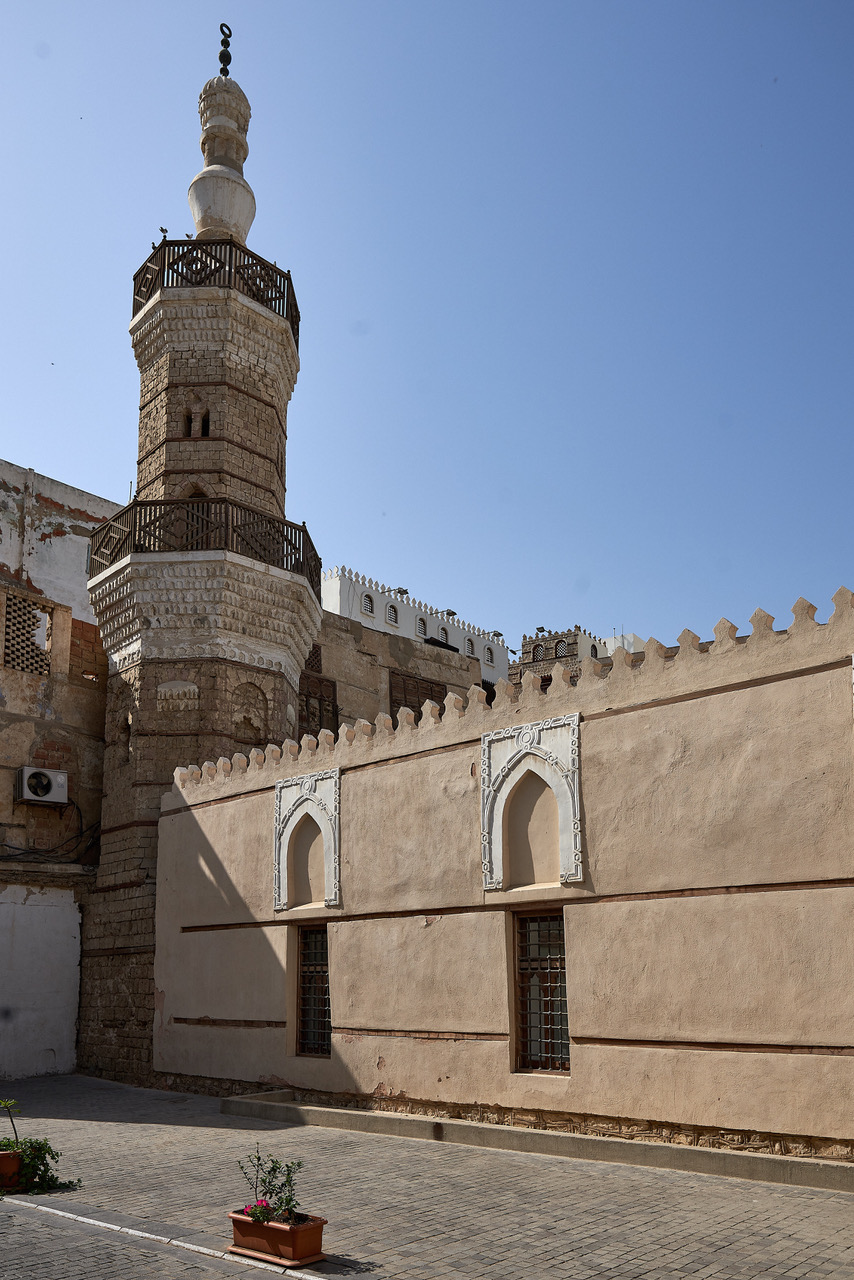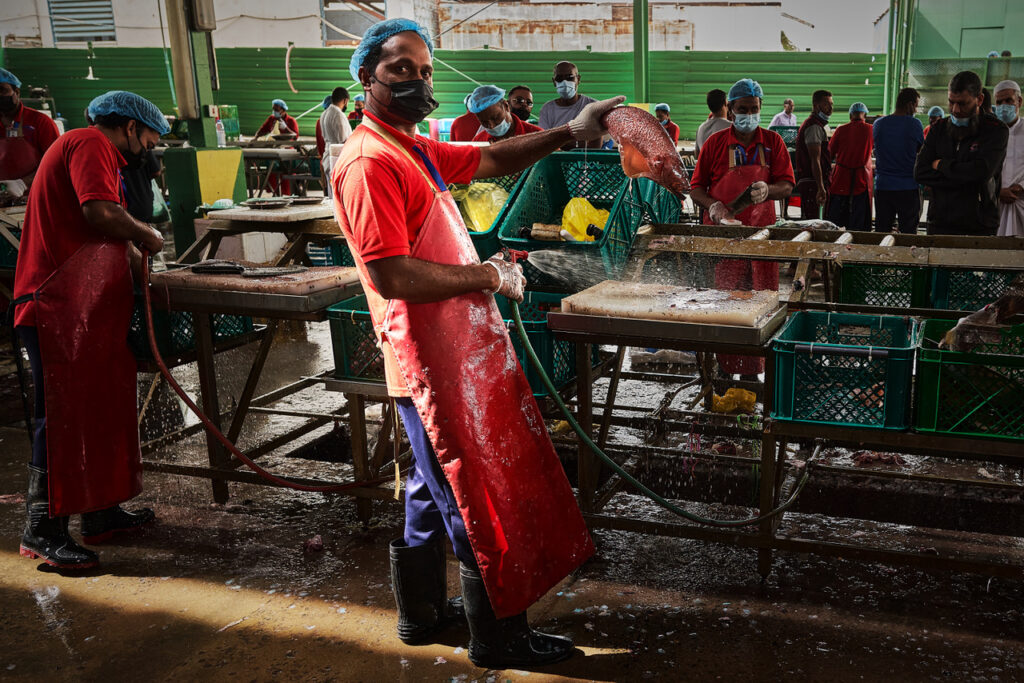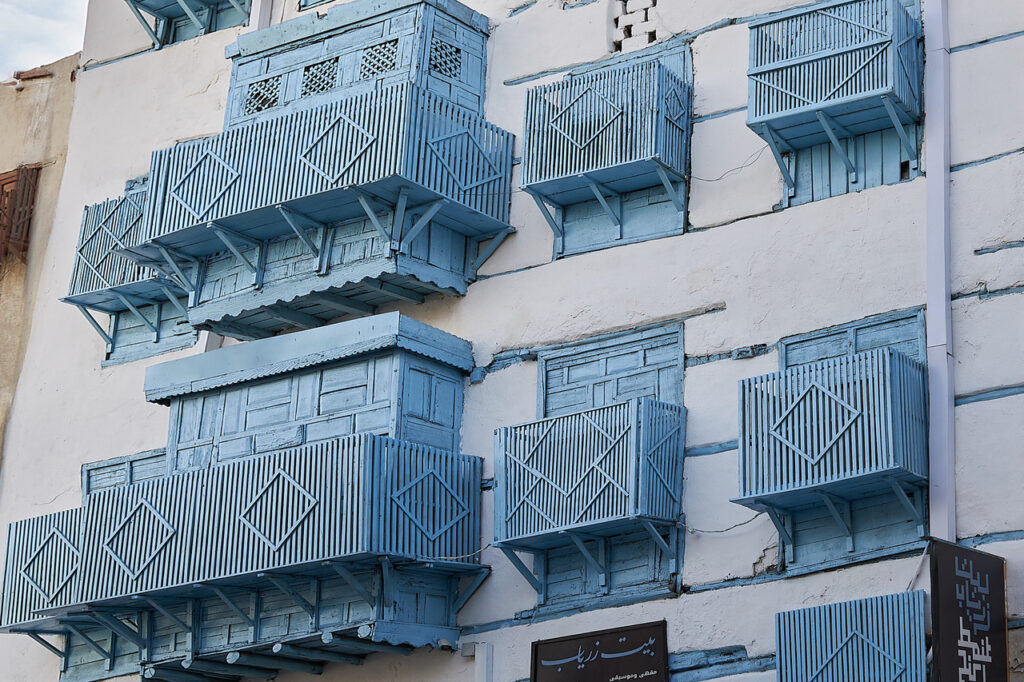Jeddah has numerous mosques, some of which follow a very different architectural language and some of which have an exceptional location. Known as an important urban and cultural center of Saudi Arabia, the city is thus home to a number of magnificent mosques. From modern interpretations to more traditional structures, here are a few of the city’s houses of worship showcased.
The cover picture shows a mosque landscape in a historical painting that is shown in the Tayebat Museum, Jeddah.
King Saud Masjid (Mosque)
The largest mosque in the city of Jeddah, the King Saud Masjid, was designed by Abdel Wahed El-Wakil, a renowned Egyptian architect to whom more than 15 mosques in Saudi Arabia can be traced. The King Saud Mosque (cf. photo in Chapter „Jeddah’s Contemporary Architecture“) covers 9,700 square meters, of which 2,464 are dedicated to the prayer area. The mosque is known for its impressive domes, the largest of which is about 20 meters wide and over 40 meters high, and for its minaret, which rises 60 meters into the sky.
Sayidna Aisha Masjid
The Sayidna Aisha Masjid is a modern interpretation of a traditional place of worship. It is a contemporary mosque that has reinterpreted iconic elements of mosques such as the domes and minarets. With its conical shape, the Sayidna Aisha really stands out from the many mosques in the city.

Hassan Anani Mosque
The Hassan Anani Mosque (above) is an attractive mosque of medium size and an ideal starting point for a walk along the Middle Corniche Park. The mosque, built by Sheikh Hassan Mohammed Khalil Anani in 1982 – 1985, exudes an Egyptian design. Its floor plan picks up the motif of the Star of Baghdad, i.e. the octagonal Islamic star. The dome is covered with tiles of gold-colored ceramics and is flanked by two minarets about 35 meters high.
Address: opposite the Corniche Road / Al Hamra Street traffic circle.
Al-Rahmah Mosque
In the northern section of the Corniche is one of the biggest visitor attractions, namely the Al-Rahmah Mosque – this fascinating mixture of old and new architecture was built in 1985 on an area of about 2,400 m2. It is located directly opposite the Formula 1 track of the Saudi Arabian Grand Prix. Sometimes referred to as the “floating mosque,” the mosque was built on a stack of white concrete piles above the water and is surrounded by the sea at high tide, making it appear to float. Unfortunately, the mosque is currently inaccessible for an extended period of time due to construction (starting March 2022).

Ash-Shafi’i Mosque
The Ash-Shafi’i Mosque (above) – the oldest mosque in Al Balad – is small and modest, but no less worthy of a visit. Imam Ash-Shafi’i is considered one of the most outstanding Islamic scholars of the 9th century AD (second century AH). He was the author of the seminal work “Ilm Usul Al Fiqh” (“The Science of the Sources of Islamic Jurisprudence”) and thus became the “Great Jurist of the Sunnah”. According to historians, the mosque’s minaret was built in the 13th century and its marble columns date back to the Ottoman rule and are believed to have been brought to Jeddah by traders from Ethiopia. This place of worship is also known as the Umary Mosque, named after Prince Umar, the second caliph of Islam. It is said that the site is more than 1,400 years old. The mosque, which was rebuilt about 400 years ago, is in good condition thanks to another renovation in 2009. Its layout is square and has an open courtyard in the center.

